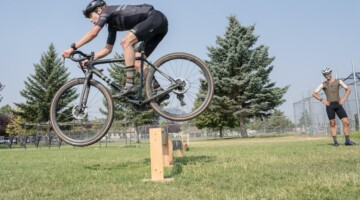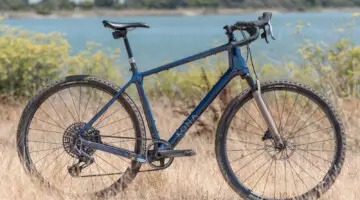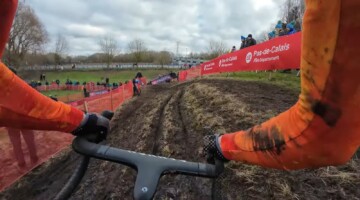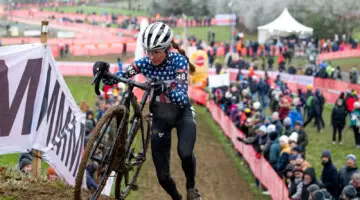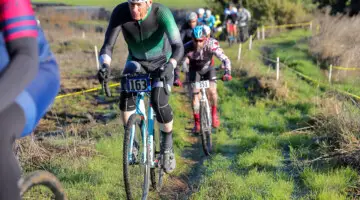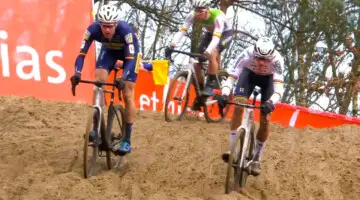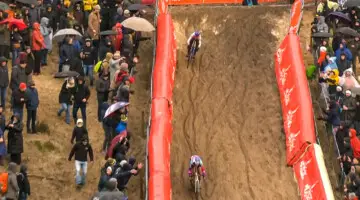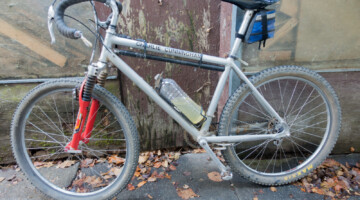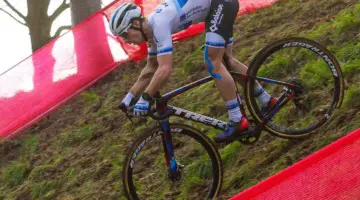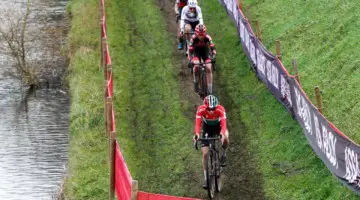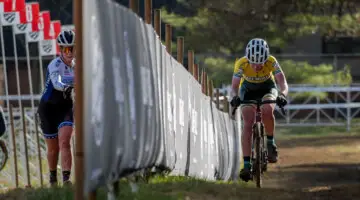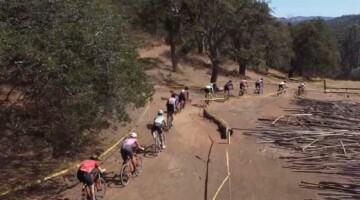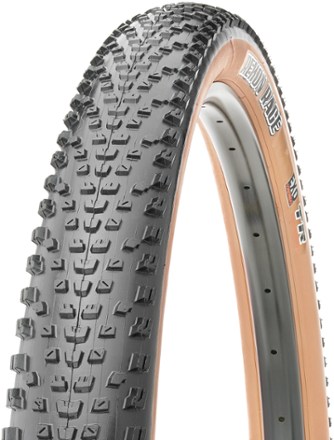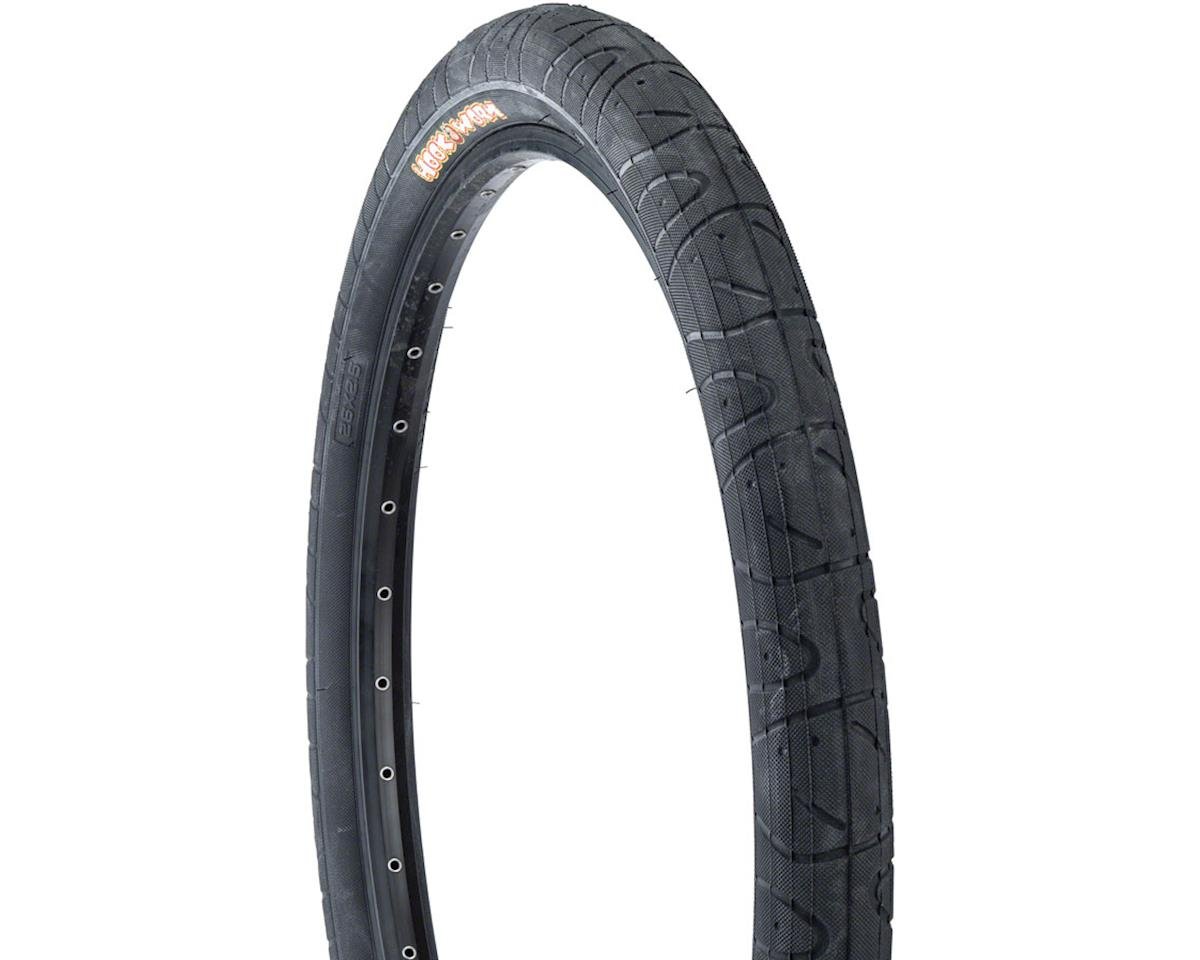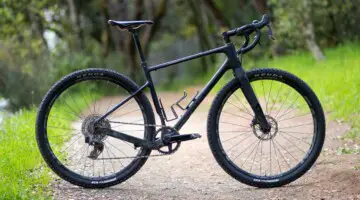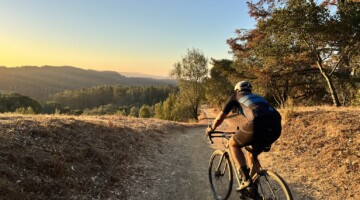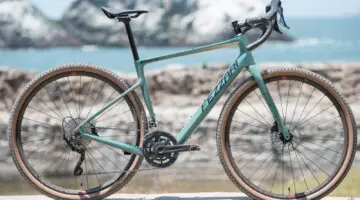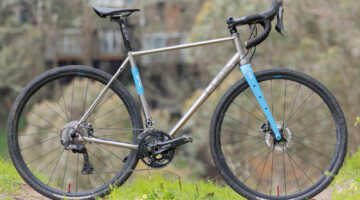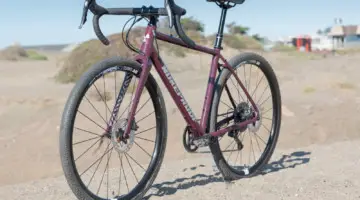Gravel is the fastest-growing cycling discipline in North America. As the sport matures, it exerts worldwide influence in other cycling nations and in nations that manufacture cycling equipment. Drop bar mixed terrain riding with an arguable bias towards off-road riding creates needs that cyclocross bikes cannot completely cover, so bicycle innovation takes place as the sport evolves into sub-disciplines from gravel racing to adventure-oriented gravel.
Growth in gravel as a cycling category is analogous to the mountain bike revolution that started in the late 1970s and exploded in the 1990s. Every season we see equipment evolve to be more efficient, offer more control, and more comfort. Just as with road cycling and mountain biking, racing often drives innovation and influences riders and their choices. For gravel, bike design, wider tire choices, bike suspension, and drivetrain options are areas we see changing the most. Many in the cycling industry are old enough to joke that a gravel bike is a modern 1990s mountain bike. The terrain traveled is similar, since early mountain biking did not include as much technical (often man-made) terrain as mountain biking does today. One significant difference with gravel is the use of drop handlebars.
Most recently we see drop bars on mountain bikes used for marginal gains at the Elite level of the Lifetime Grand Prix gravel series, the largest invitational series in North America.
Pioneers
Early mountain bikers gravitated to flat handlebars, perhaps because the original Klunkers, the old Schwinn Excelsiors, had upright handlebars. However, one prominent rider and racer exerted her influence with a drop bar bike.
Jacquie Phelan famously rode and still rides, a drop bar mountain bike built by Charlie Cunningham, now her husband of 36 years. She is a Mountain Bike Hall of Fame charter inductee, inductee to the U.S. Bicycling Hall of Fame, three-time NORBA Champion, and frequent winner on the road and in cyclocross. Charlie Cunningham’s bicycle frame design and construction innovations and bicycle component innovations were a decade ahead of mountain bike developments in 1980. Large-diameter aluminum, cam-actuated brakes, and drop handlebars were unheard of in the new discipline. People remember John Tomac racing a drop bar mountain bike in 1990, but Phelan raced drop bars to victories a decade before.
Jacquie Phelan in 2024
Jacquie Phelan lives in the San Francisco Bay Area, so I’ve had the lucky opportunity to ride with her on several occasions, mostly on organized mixed-terrain rides. She rides a custom Randonneur bike built by Brian Chapman, with many details paying homage to Charlie Cunningham. Ms. Phelan still rides frequently and devotes time to bicycle advocacy, reading, writing, and caring for her husband Charlie.
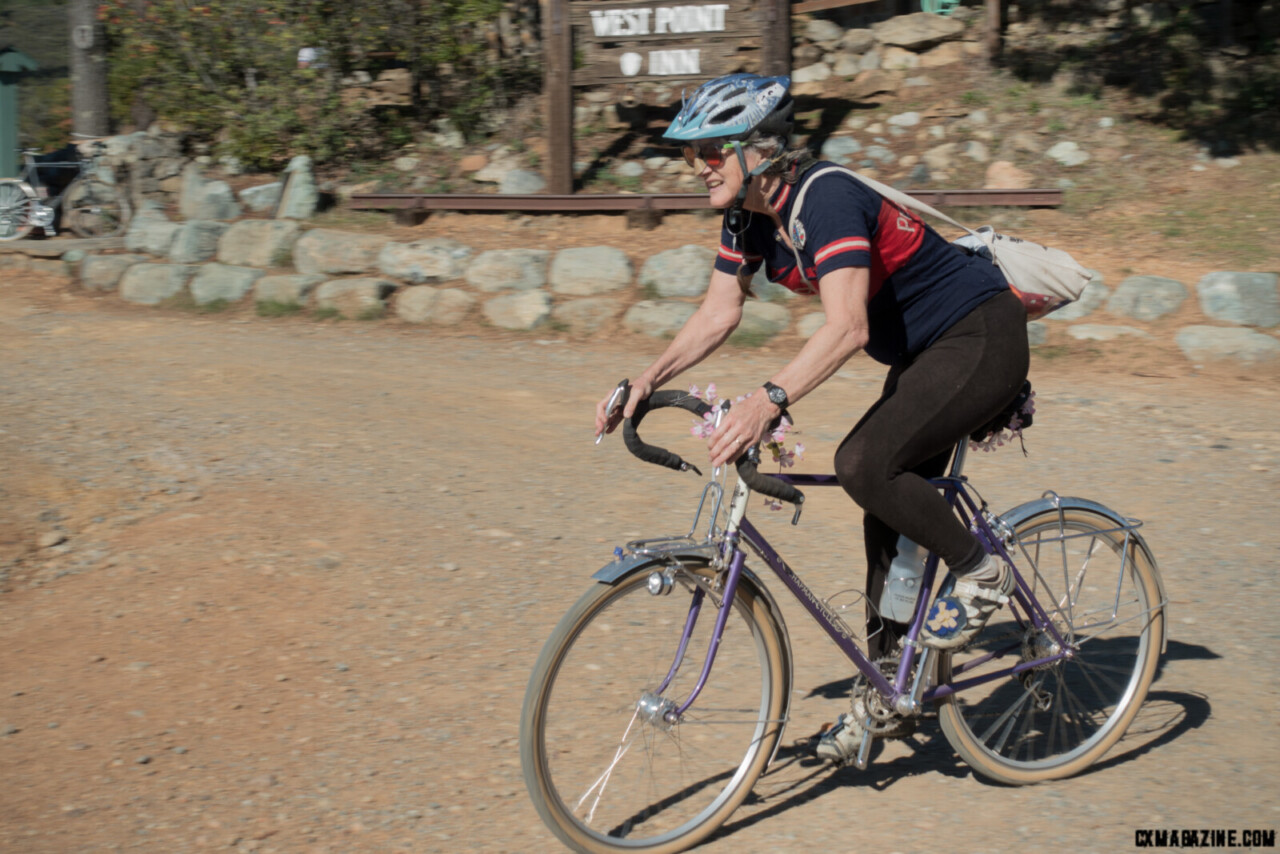
Jacquie Phelan on a bike built for her by Brian Chapman. ©C. Lee/Cyclocross Magazine
Recently I rode with Jacquie on a route she and I do often, in the Birth Place of Mountain biking. We’d never ridden this route together, so it was quite the treat to ride with one of the founders of the mountain bike movement. I inquired what bike she’d be riding and she replied, “On my Cunningham!” Of course. The model she rides now is not the famed “Otto” which she rode to victories early in her career. It resides in the Marin Museum of Bicycling and Mountain Bike Hall of Fame, alongside her husband’s bike.
Her first ride on part of this route was on a Raleigh 5-speed with upright handlebars and a wicker basket! Her bike now has a 100mm Manitou SX on the front with a Continental Mountain King 26″ X 2.3″. Charlie’s linkage brake would not work with the suspension fork, so there is a standard narrow-profile cantilever brake. The rear tire is a Maxxis Ikon 26″ X 2.2″ stopped by a roller cam brake on the chainstays behind the bottom bracket. Though she’s considered it, Jacquie eschews tubeless tire setup to keep it simple.
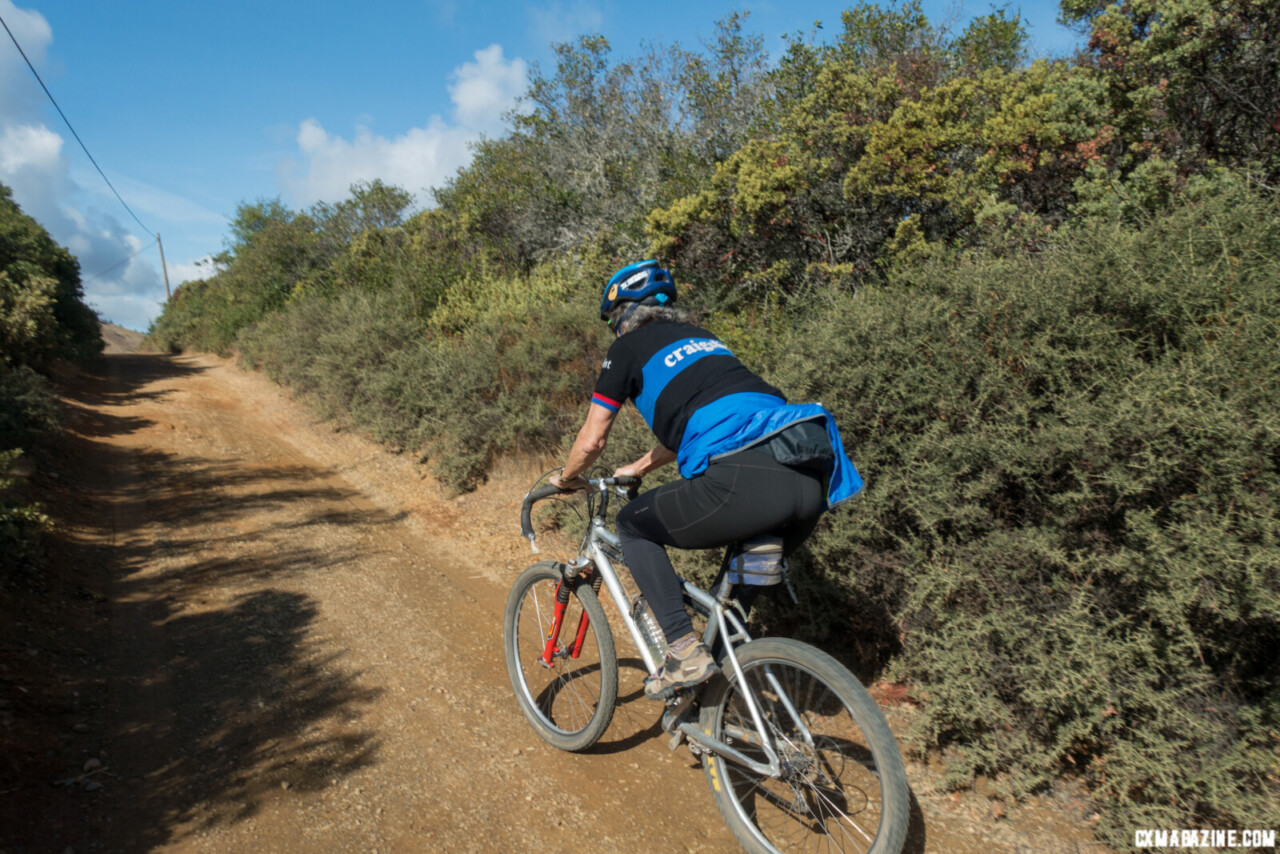
Jacquie Phelan on her Cunningham in the hills above Fairfax, California. ©C. Lee/Cyclocross Magazine
Suntour barcon ratchet bar end shifters move the chain across the triple chainrings on a crank with long arms. I did not count if there are 7, 8, or 9 cogs on the back, but the largest cog has no more than 32 teeth. Then there are the drop bars, narrow and deep by today’s compact standards, but shallower than the road offerings of 1980.
I rode a modern gravel bike with tubeless tires, a short-travel front suspension, hydraulic disc brakes, a 1X wireless drivetrain, and a dropper post. Though a contrast to Jacquie Phelan’s Cunningham, it is not so different conceptually. Although the Cunningham has a quick-release seat clamp, Jacquie does not use it to drop her seatpost. Instead, her seatpost houses a tire pump, and the quick release is to access that.
We rode up and down the steep fire roads of northern Marin County. The rain from the previous day made the surface delightfully tacky. Jacquie led me on a section of flowing, autumn leaf-covered single track that her husband Charlie built over 30 years ago. All the while she weaves tales of early mountain bike history.
On the second half of our loop, the trail climbs at times steeply over rocky, washed-out pitches. Line choice and rider position are important for getting over the chunk and keeping traction. As we approach those sections, the old pro stands up to ramp up power and picks her way up without a dab. Ms. Phelan still has it as she heads toward 70 years old! I might out-climb her on the longer climbs, but I wait a minute and she comes confidently past, never stopping.
At the conclusion of our ride, we go down the famed “Repack” Hill, Cascade Fire Road as it is officially known. She admits that downhill is not her forté. It is not mine either, so we descend together under control, chatting the entire way. Before we’re done, she knows the area so well we take a couple of other short trail spurs.
Phelan has achieved far more than just winning races. She founded WOMBATS (Women’s Mountain Bike & Tea Society) to get more women into riding and socializing out in nature. She’s also one of twelve founders of NORBA, the first association to sanction mountain biking in the USA (before it merged with USCF to become USA Cycling). But she may be best known for her smile while riding, and her knack for making others smile as well.
As a contributor to Cyclocross Magazine, I get to meet bicycling luminaries and celebrities. It is a privilege to ride with Jacquie Phelan, who is rather unassuming. As we ride into Fairfax, I realize she is quite a celebrity, at least in this town!
Charlie Cunningham suffered a traumatic brain injury in 2015 during a bike ride. He is now in a care facility and there is a GoFundMe page to help Jacquie with his care.

